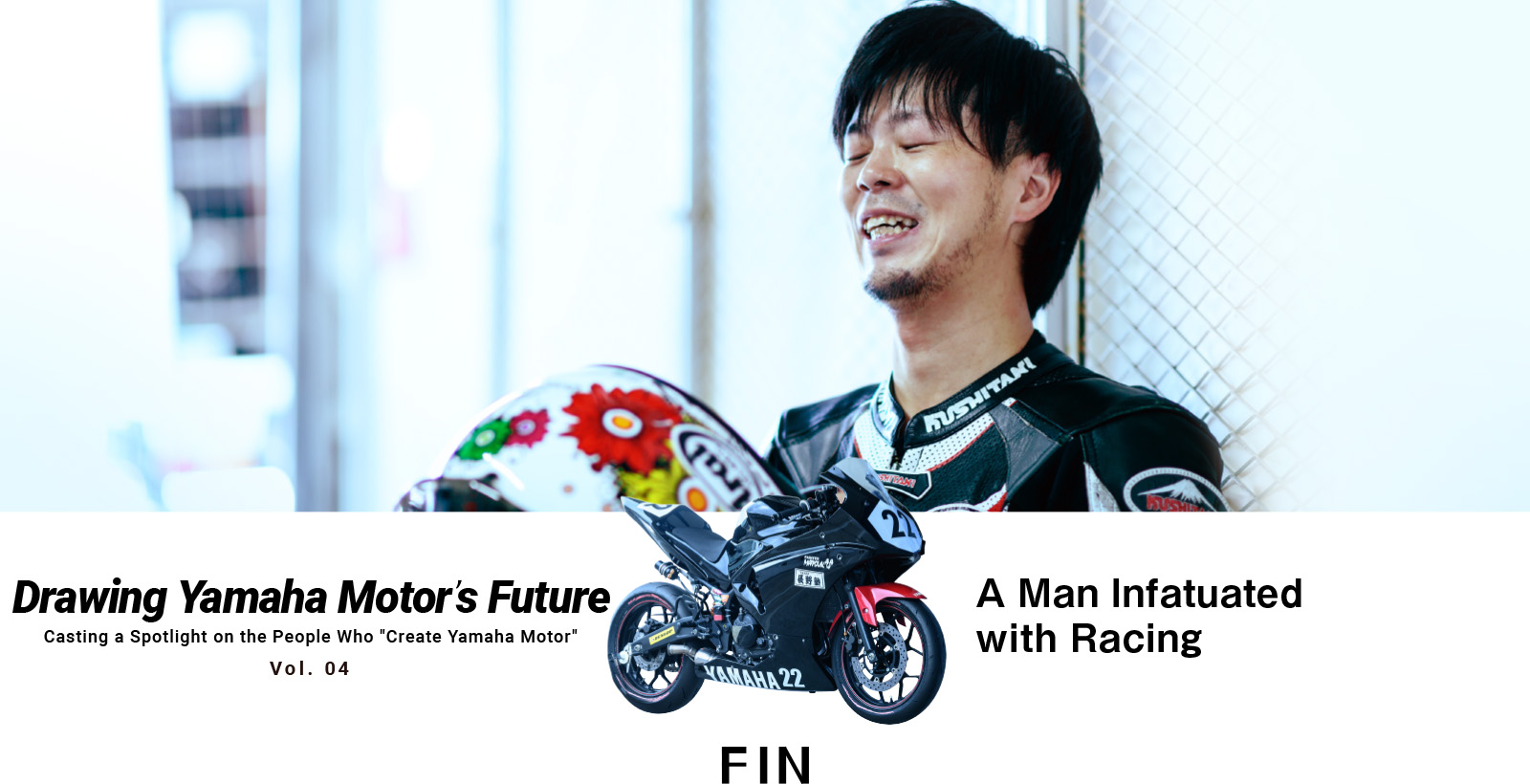
Works in the Design Center’s Planning Design Division. Born in Shizuoka Prefecture. Majored in law in university and acquired a graduate degree in the U.K. After joining Yamaha Motor, he worked in domestic motorcycle sales and was later transferred to the Design Center. He currently works on design planning for supersport models destined for Europe and North America.
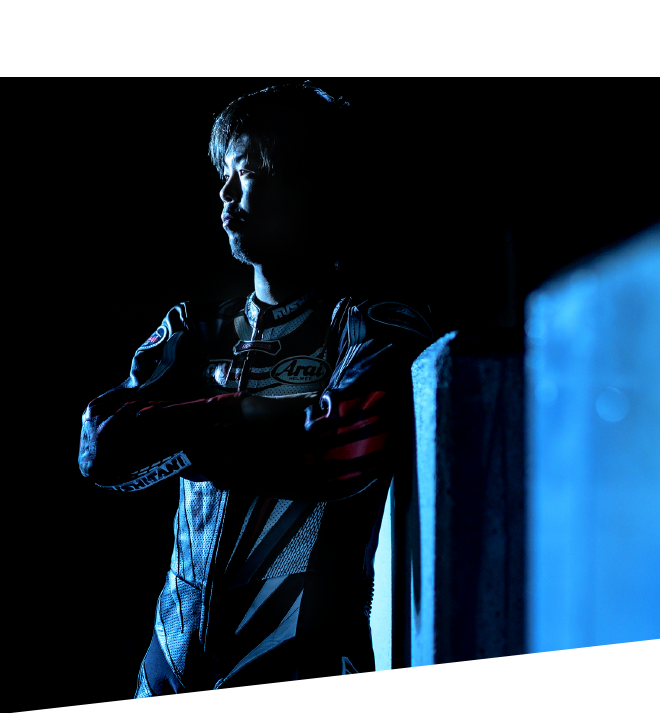
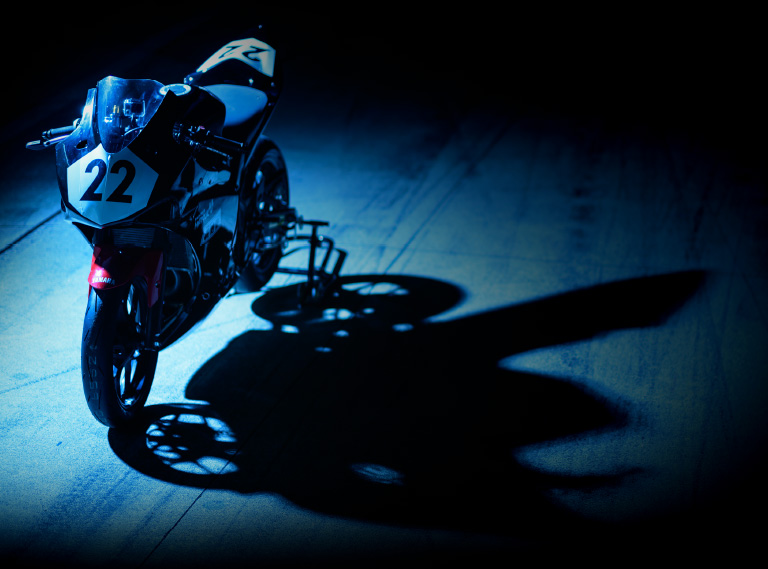
Vroom! Vroom! Vroom!
The pits at Suzuka Circuit reverberate with the sound of engines being warmed up. Making my way through the people and machines at the track, I come to a black YZF-R25 on stands in the garage next to the pit lane. Standing next to the bike dressed in mechanic’s overalls is Ryo Tatara. He’s getting the bike ready for the practice session due to start in a few hours. Expecting to find him under the bike with a fistful of tools, I’m surprised to see him with his eyes fixated on a laptop and his face frowned in focus on preparing the bike. When I ask what he’s doing, he says he’s just finished swapping the bike’s original engine back in for the spare one it was running before for today’s race.
”Even with the same engine, power can sometimes drop off if the tolerances for the parts inside are even slightly off. The engine I used in my last race was a little down on power, so I swapped in the better engine for this race. Right now, I’m using the computer to check the engine maps. I’m adjusting them to suit the temperature, altitude, humidity and the average speed for this track. Suzuka is near the ocean and the elevation is low, so for today...”
Although he comes off like someone from an engineering department, Tatara works right at the forefront of design at the Design Center.
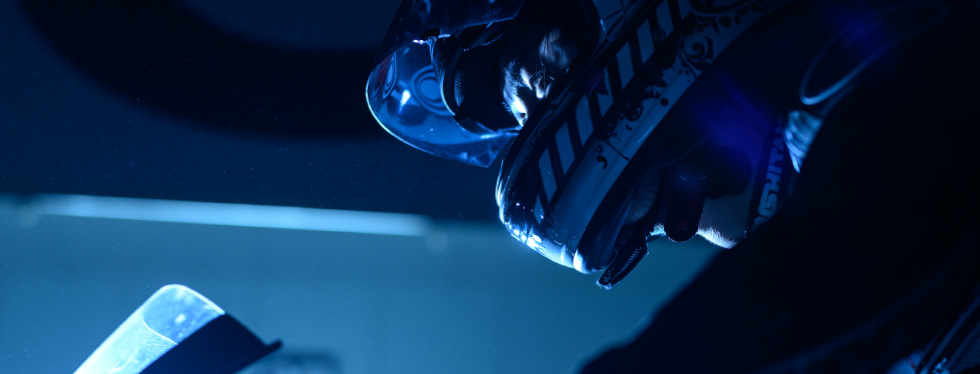
A native of the city of Yaizu in Shizuoka Prefecture, Tatara spent the majority of his youth playing soccer, but after he happened to watch a motorcycle race on TV, he came to idolize motorcycle racers. He eventually got his motorcycle license and started riding himself, but later, something happened that changed his motorcycle life forever. “A friend invited me to try a track day and it was way more fun than riding through town or twisties. I’m pretty short too, so unlike soccer, your body size isn’t as much of a factor with motorsports and that was big for me.”
Tatara started riding to track days regularly and then started entering races with his friends. He now has ten years of track riding experience but has continued polishing his skills, learning along the way how to maintain and repair his bike himself. For the past six or seven years, he’s been entering four or five races a year, usually in his local championship. When I ask how often he does track days to practice, he says: “I try to go three or four times a month.” In other words, he’s out on track practically every weekend! But his expression implies that he’d like to do even more—a sign that he’s wholly obsessed with racing. Perhaps that’s why his coworkers (respectfully?) call him, “The fastest guy at the Design Center.”
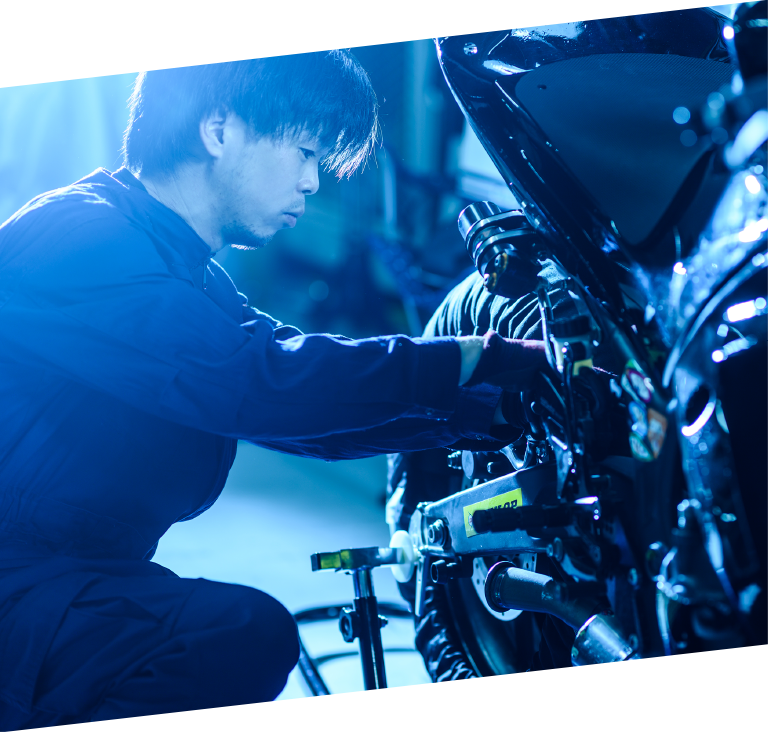
”Well, I don’t know if I’m actually the ‘fastest,’ but I’m happy all the same!” he says with a smile. “But being assigned to the Design Center in the first place was really a bolt from the blue, because I’d never even studied design.” Tatara is a rarity at the Design Center, having majored in law at a university in Tokyo. After graduating, he then went on to attend graduate school in the U.K. With this background, most would expect him to find employment at a law firm, but instead he decided to work at Yamaha Motor. “I studied law so much to the point that I wanted a job that I would enjoy doing. For me that meant working with motorcycles and at Yamaha, but not in the legal department. I asked for a position that would really let me do something with motorcycles.” His first assignment was in domestic sales and he was put in charge of Okayama Prefecture, an area he had no connections to and knew little about. His days were spent traveling around to dealers and talking sales. Not all the dealers he visited in the region were large either; Tatara often went to small local bicycle shops that only sold scooters. Two years of hard work in sales left a deep impression on him and toughed up his body and spirit.
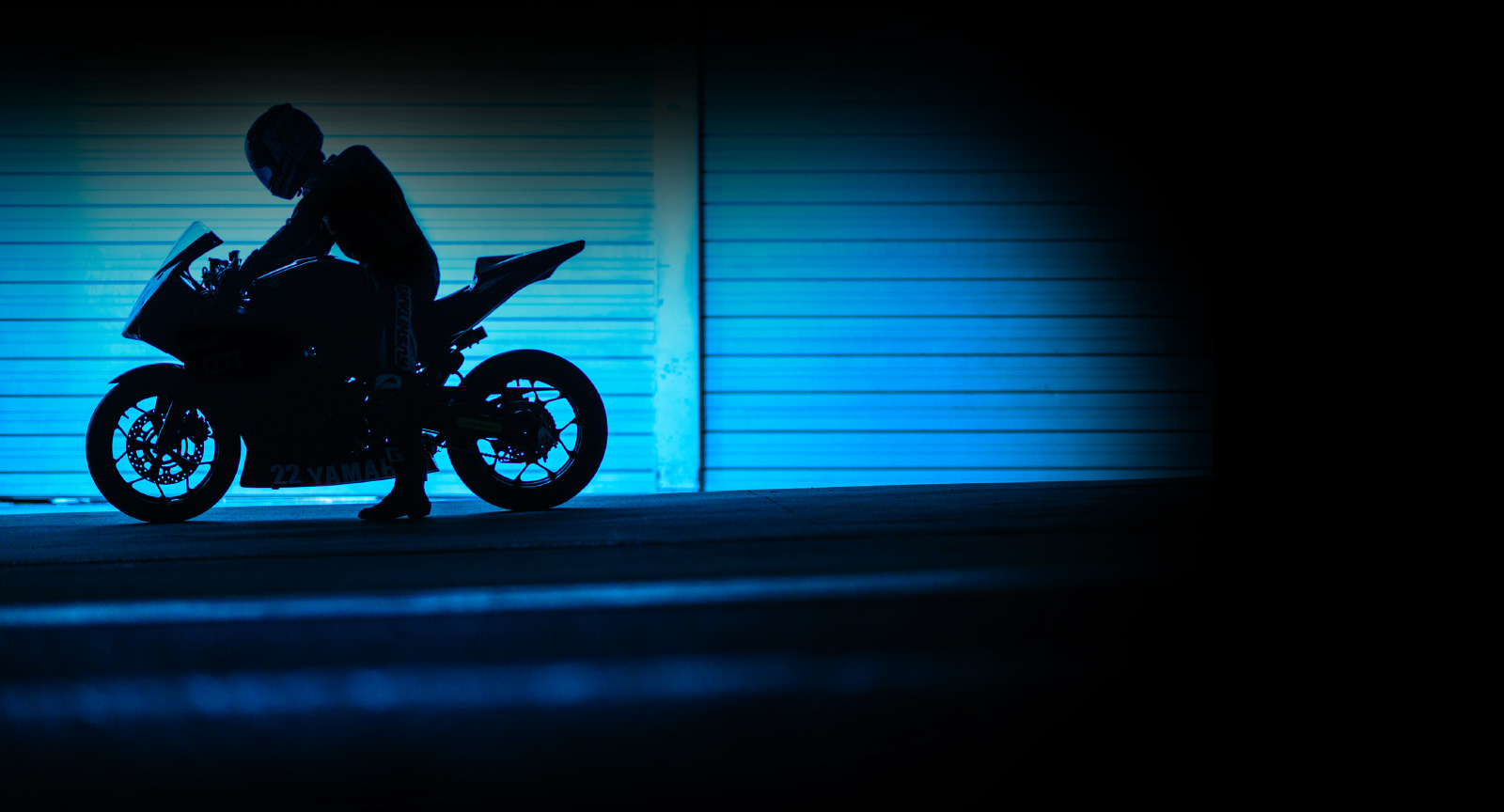
After being struck by that “bolt from the blue” and being assigned to the Design Center, Tatara is currently in charge of supersport models—his favorite motorcycles—at the Planning Design Division. “I study and analyze color schemes and 3D designs for models destined for developed markets. More specifically, I develop the stories and strategies for those models in order to decide on their shapes and colors. For example, why is this bike blue? What’s the reasoning for going with blue? What are the technical difficulties? How can that blue be used for other products? The logic behind all these factors must be solid before you pass it on to designers to have them actually sketch or render things. So I help bring the design together, but then I also have to butt heads with a lot of other people to push through a design. I’m a sort of ‘shield’ for the professional designers when people from all the relevant development divisions question why a design or color is the way it is.”
Once the direction for the colors and 3D form is set, it is implemented with models in the same product family meant for other markets and with different displacements. In other words, Tatara shoulders a heavy responsibility in that he is tasked with essentially creating trends for Yamaha Motor Design on a global level. “It’s not just styling,” he says. “I personally keep in mind the shapes and ease of maintenance with a bike’s mechanicals. Being a racer myself, I’m always taking my motorcycle apart, so I always end up thinking at work about the owners or dealer mechanics that will eventually work on a bike’s maintenance.”
While seemingly out of place in design at first glance, the powers of logical organization and calm analysis that Tatara learned at law school, the negotiating skills he acquired in sales and—more than anything—his hardcore love of motorcycles actually become his strongest merits when it comes to design planning.
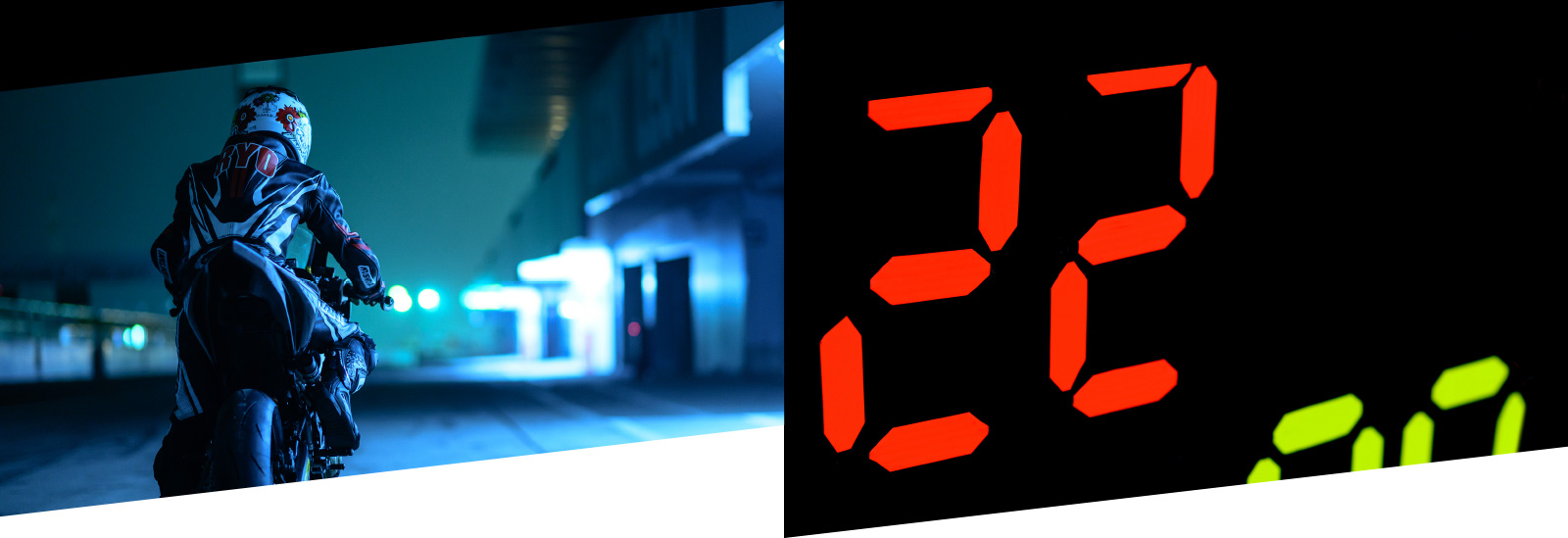
Just because Tatara is a Yamaha employee doesn’t mean he gets his bike parts for free—all his racing expenses come out of his own pocket. “I have to buy tires, oil and parts all the time, then there’s the race entry fees, expenses for practicing at three or four track days a month, and then paying highway tolls and gas just for getting to and from the track. Racing definitely sucks up money. And I recently just bought a brand-new R6 to race in the 600cc class, so now I’m spending even more! It’s a little ridiculous, but I’m probably spending about one-third of my yearly salary on racing,” he says with a wry smile. Yamaha does have a company racing team for which it provides a range of support for, but Tatara simply prefers to go racing on his own. “I could just join the company racing team, but I enjoy setting up, tuning and riding the bike myself, even if it costs money. If I want to try something, I can do it myself and all the results I get come down to me. Racing’s more rewarding for me when you can’t make any excuses. That’s why I like all-out sprint races more than endurance racing.”
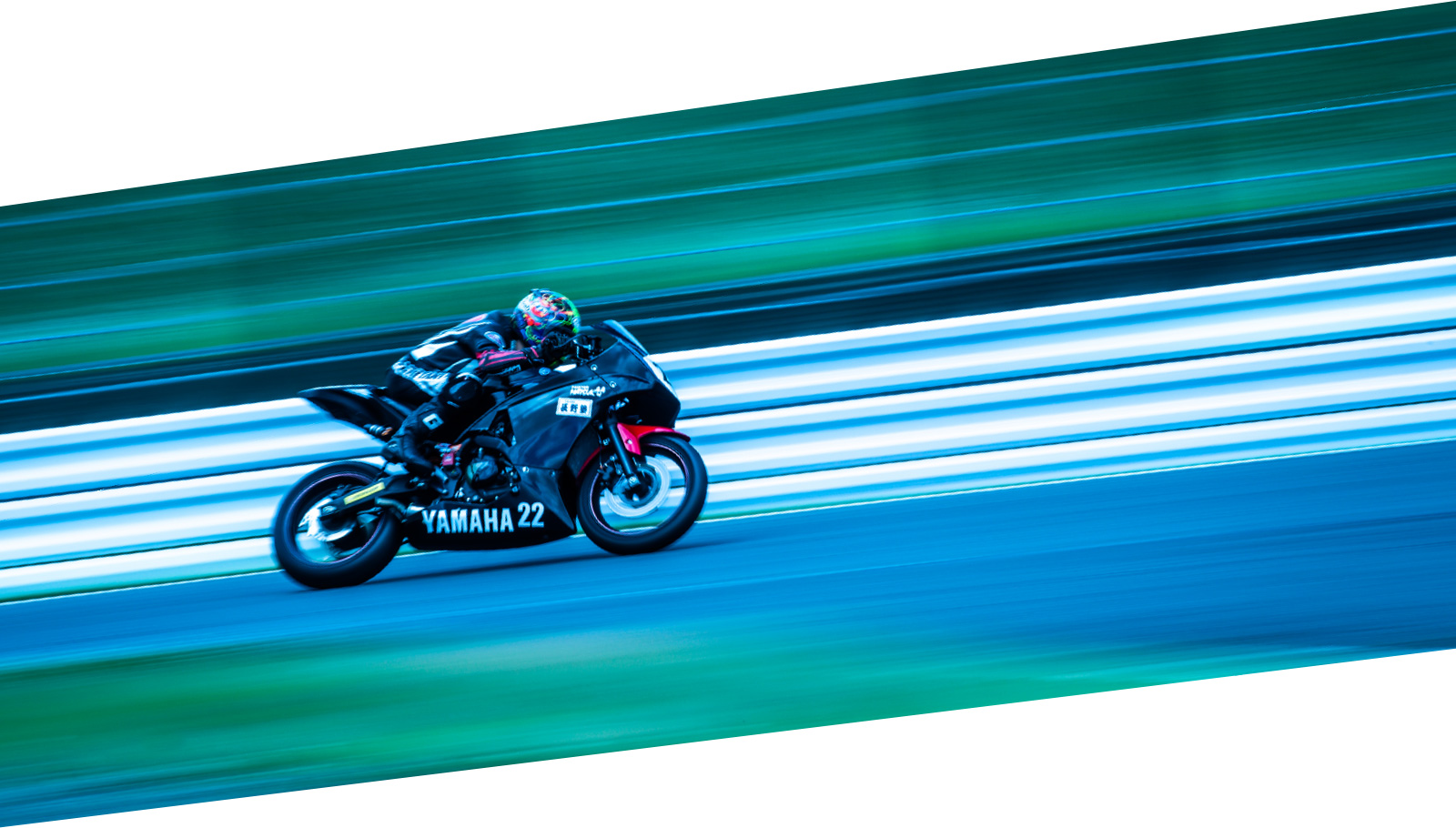
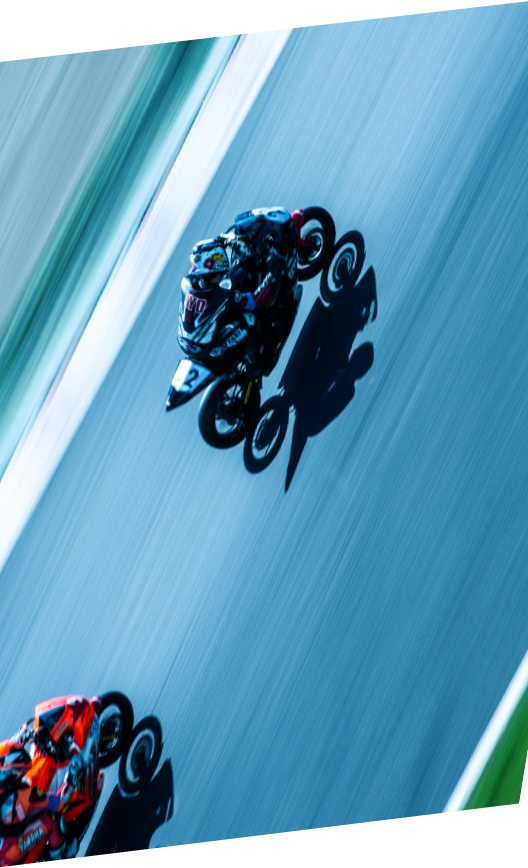
While he talks, Tatara looks at the track conditions. It had been raining heavily at Suzuka all morning. “I don’t mind racing in the wet. Since you have to take it easy in the turns, winning or losing depends on the bike’s acceleration on the straights, so for racers like me that don’t weigh that much, we get a slight advantage,” he says confidently.
The announcement finally comes over the loudspeakers that practice will start soon, and the pits start to buzz with activity. “Okay, here I go!” Tatara says as he eagerly puts on his helmet and heads out onto a wet Suzuka Circuit pit lane.

